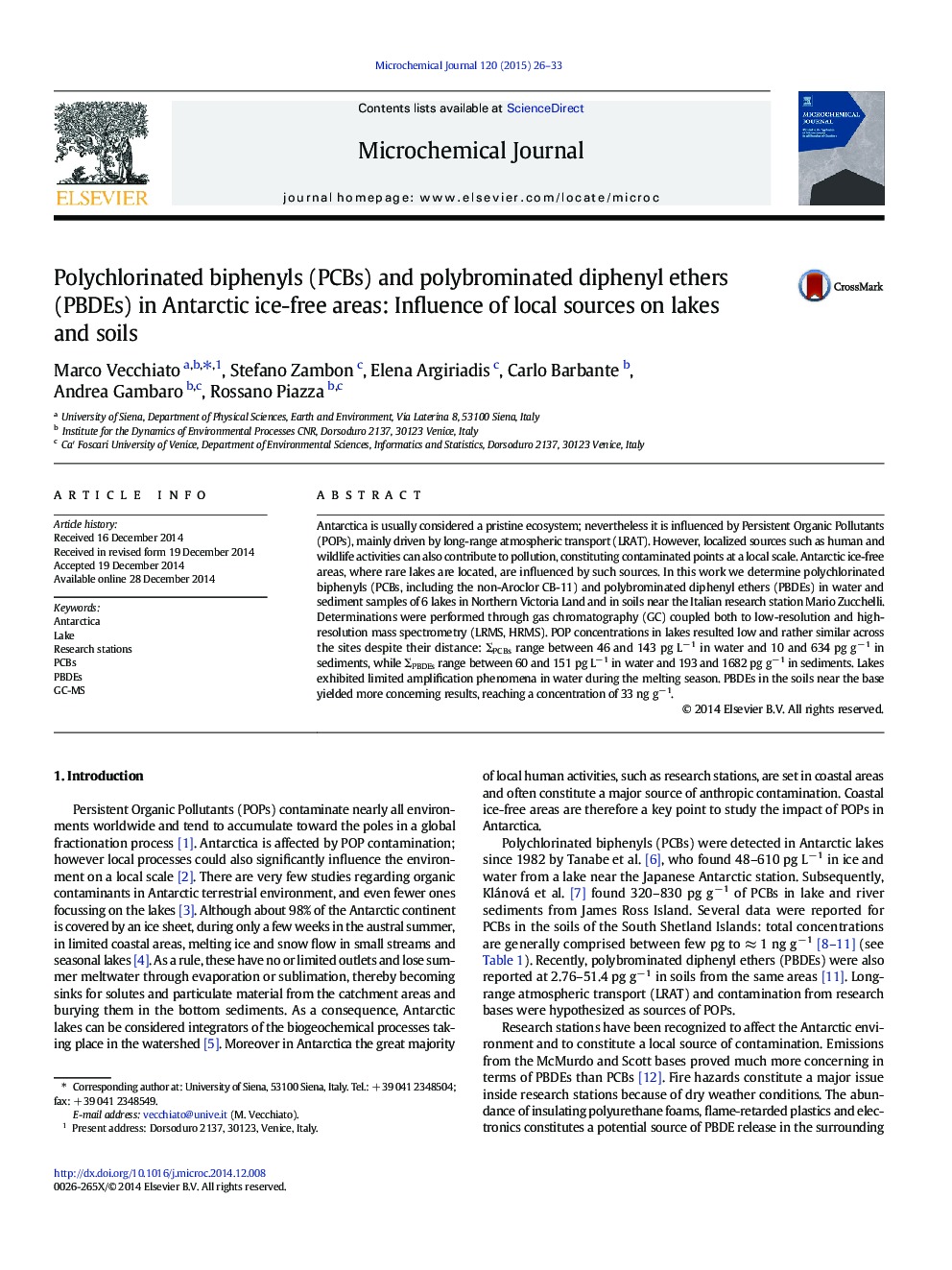| Article ID | Journal | Published Year | Pages | File Type |
|---|---|---|---|---|
| 1227707 | Microchemical Journal | 2015 | 8 Pages |
•PCBs and PBDEs were measured in ice-free areas of Northern Victoria Land, Antarctica.•Seasonal evolution of lake water was investigated.•The role of seabirds and human activities was considered as local source of POPs.•PBDEs near the research station were significantly higher than in background areas.
Antarctica is usually considered a pristine ecosystem; nevertheless it is influenced by Persistent Organic Pollutants (POPs), mainly driven by long-range atmospheric transport (LRAT). However, localized sources such as human and wildlife activities can also contribute to pollution, constituting contaminated points at a local scale. Antarctic ice-free areas, where rare lakes are located, are influenced by such sources. In this work we determine polychlorinated biphenyls (PCBs, including the non-Aroclor CB-11) and polybrominated diphenyl ethers (PBDEs) in water and sediment samples of 6 lakes in Northern Victoria Land and in soils near the Italian research station Mario Zucchelli. Determinations were performed through gas chromatography (GC) coupled both to low-resolution and high-resolution mass spectrometry (LRMS, HRMS). POP concentrations in lakes resulted low and rather similar across the sites despite their distance: ΣPCBs range between 46 and 143 pg L− 1 in water and 10 and 634 pg g− 1 in sediments, while ΣPBDEs range between 60 and 151 pg L− 1 in water and 193 and 1682 pg g− 1 in sediments. Lakes exhibited limited amplification phenomena in water during the melting season. PBDEs in the soils near the base yielded more concerning results, reaching a concentration of 33 ng g− 1.
